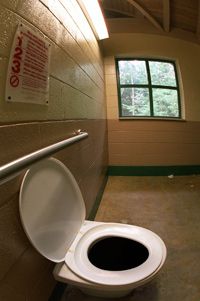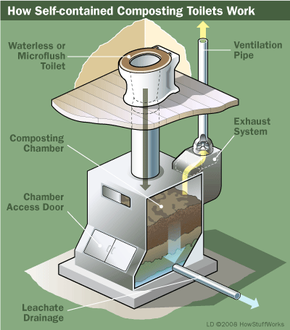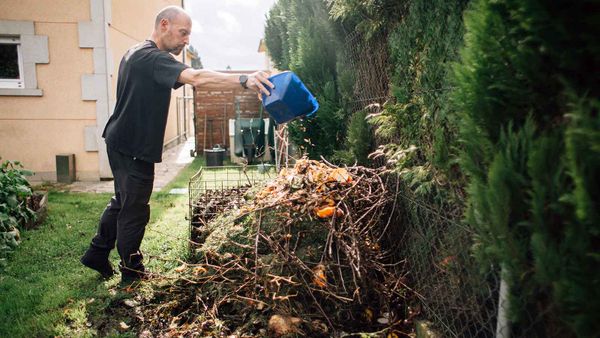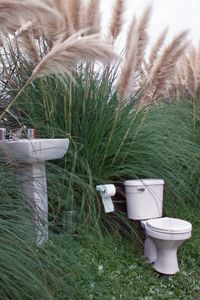Many of us work hard to keep our homes as environmentally friendly as possible. We switch to compact fluorescent light bulbs, install bamboo floors instead of vinyl flooring and lug groceries home in reusable canvas bags. But some of us may draw the line when it comes to our toilets. We want to save water. We may even have installed a low-flow toilet, but the idea of getting up close and personal with our waste via a self-contained composting toilet may seem like a bit much. With memories of rancid portable toilets and primitive outhouses dancing through our minds, we first want to know, how green is this toilet?
In this article, we'll take a look at the environmental impact of a self-contained composting toilet, and whether it's a boon to the Earth or a crappy idea all around. First, though, let's go over how a composting toilet works. The process works the same as the composting pile you may have for your kitchen scraps. Aerobic bacteria within the waste break it down with the help of air, heat and time. Someone does have to stir material regularly, and add materials such as sawdust or popcorn to keep those bacteria at work. The result is an earthy nutrient-filled organic matter known as humus. One person would produce approximately 80 pounds (36 kilograms) of humus a year [source: Steinfeld and Anderson].
Advertisement
And where is this miraculous transformation taking place? There are two kinds of composting toilets: self-contained and central. They don't look that different from your current commode. Self-contained composting toilets are smaller and are more likely to be found in cottages or seasonal homes. The self-contained unit shouldn't be used year-round if more than two people are using it. As the name implies, the toilet and the composter are combined in one unit, so composting is taking place just under your throne. In a central system, the toilet is connected to a separate composter, which may be in the basement or on the side of the building. Central composting toilets have a bit more capacity for year-round homes but are more expensive than self-contained composting toilets.
Both have the same goal, though: to destroy the pathogens and recycle our excrement without using water. Instead of flushing, the waste drops down a pipe to the composter, which is hidden from view with a trap door or screen. But how much water is saved? Are there any hidden costs to the environment? We'll see what all the stink is about on the next page.
Advertisement



